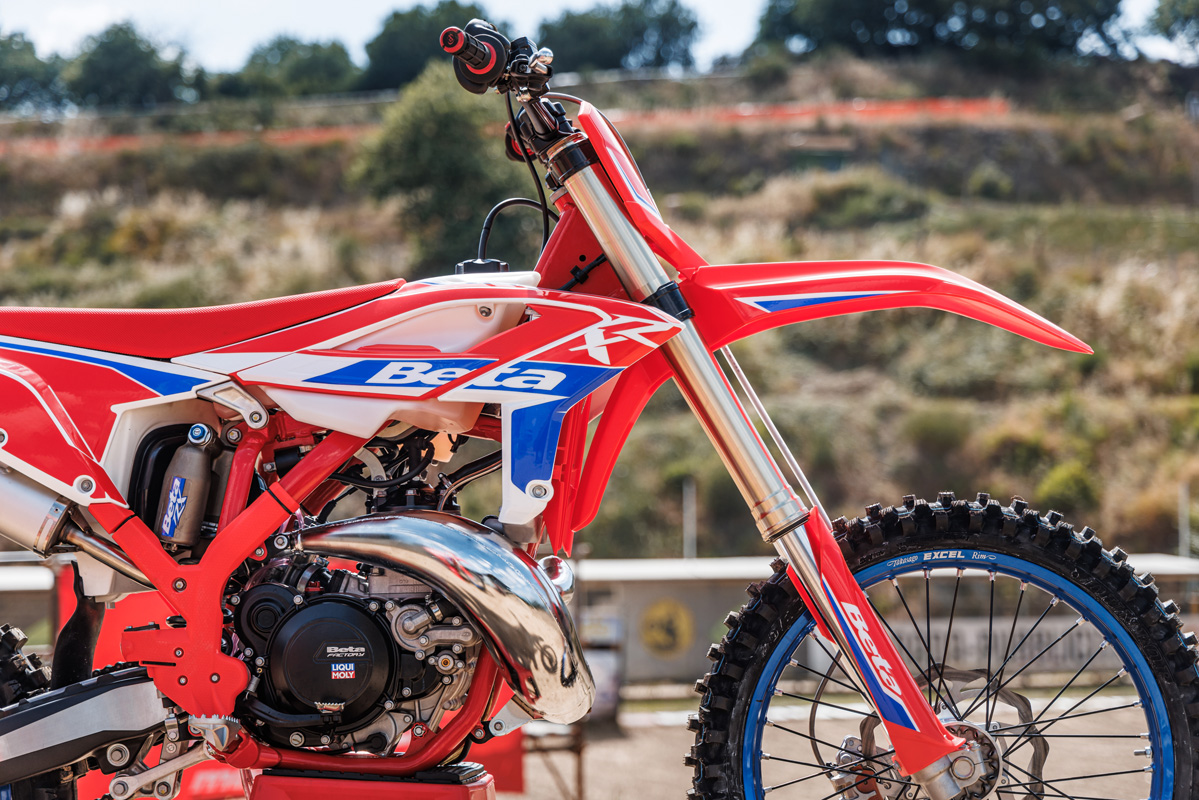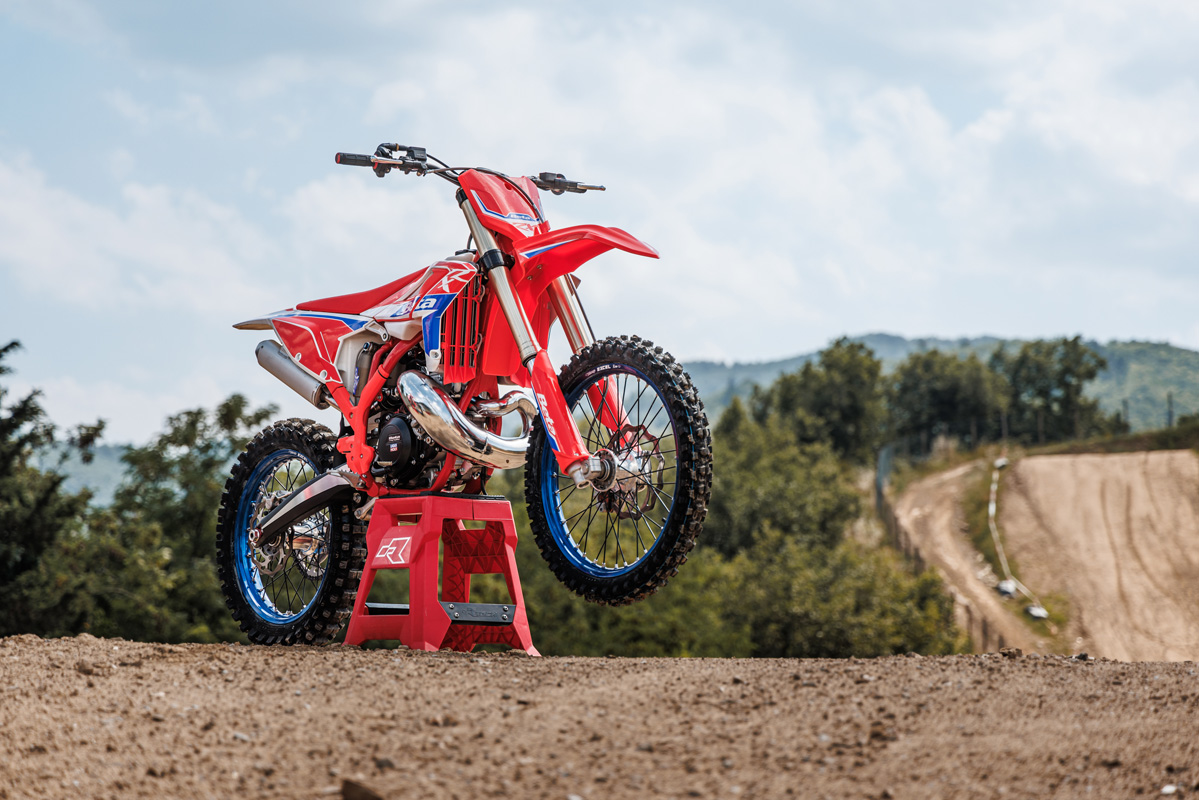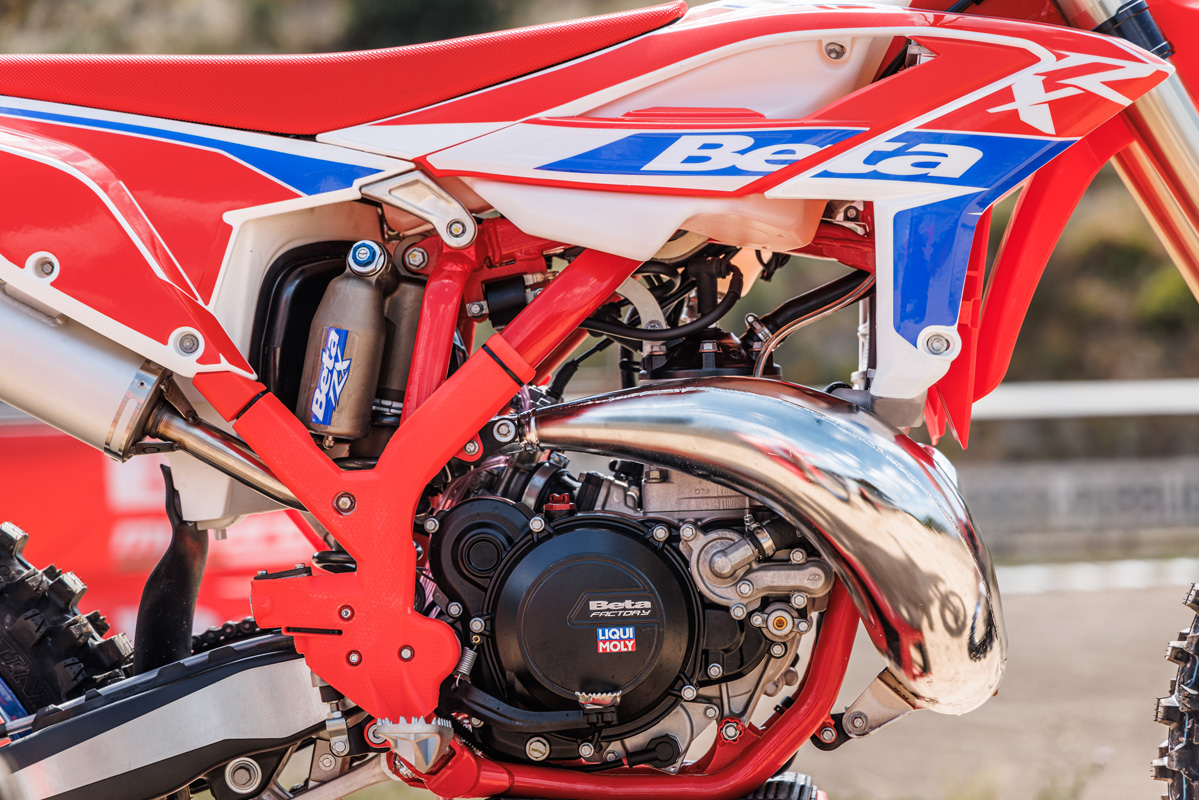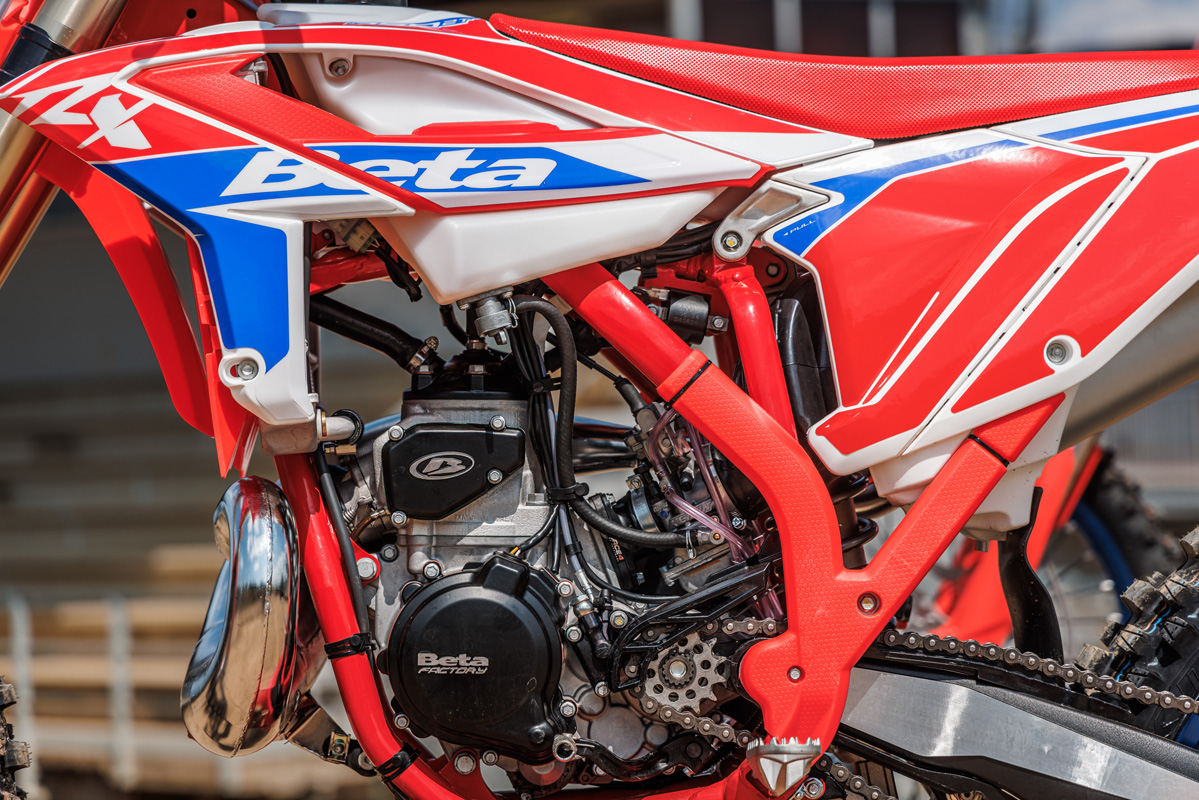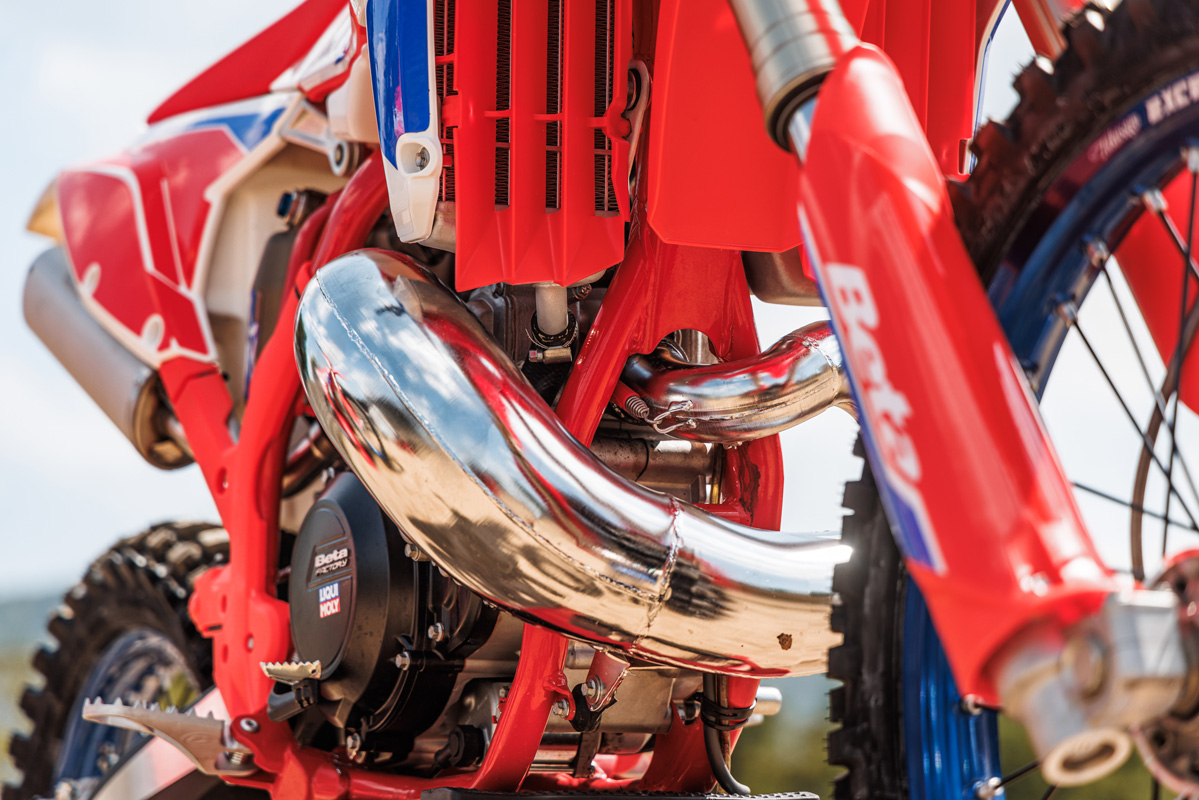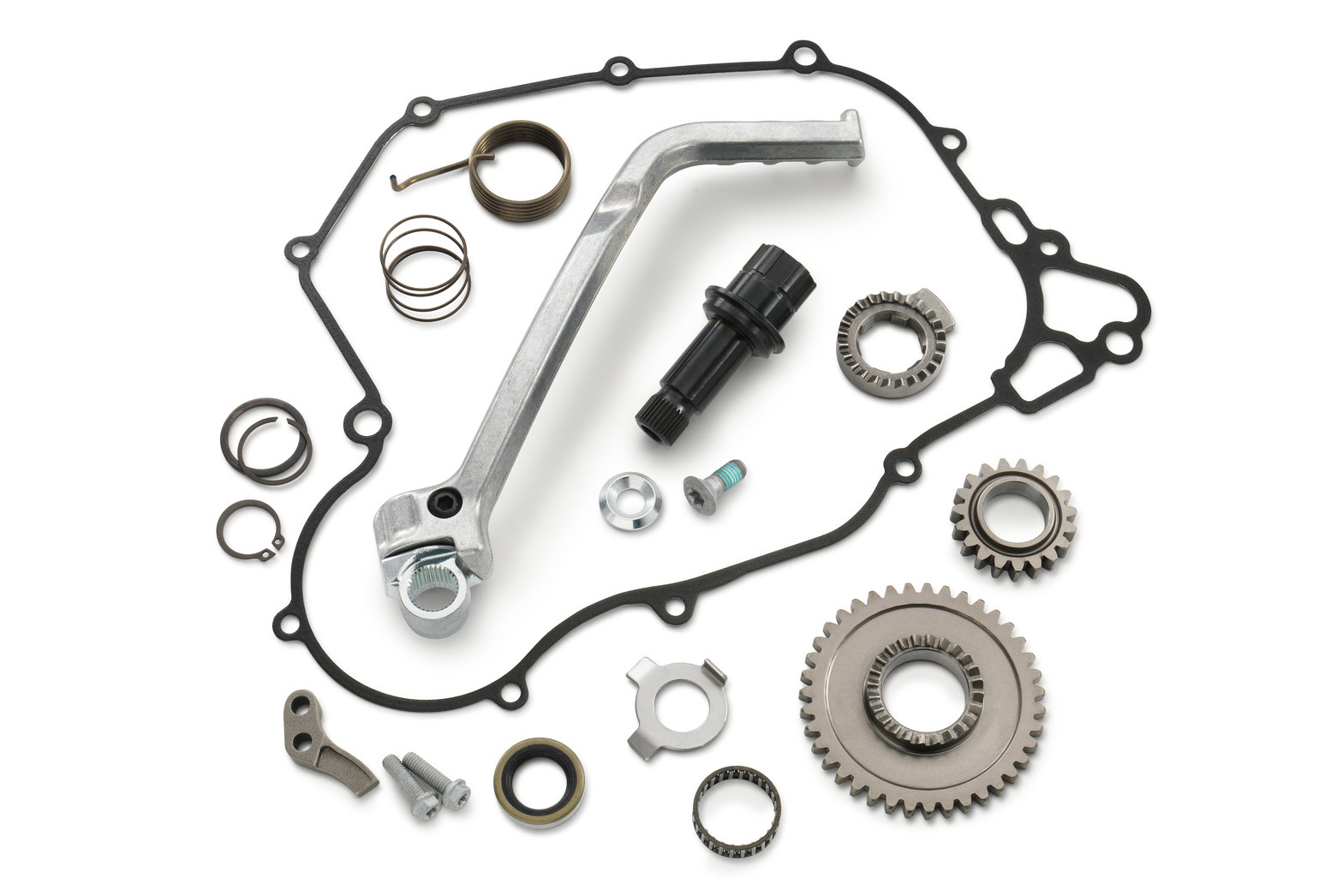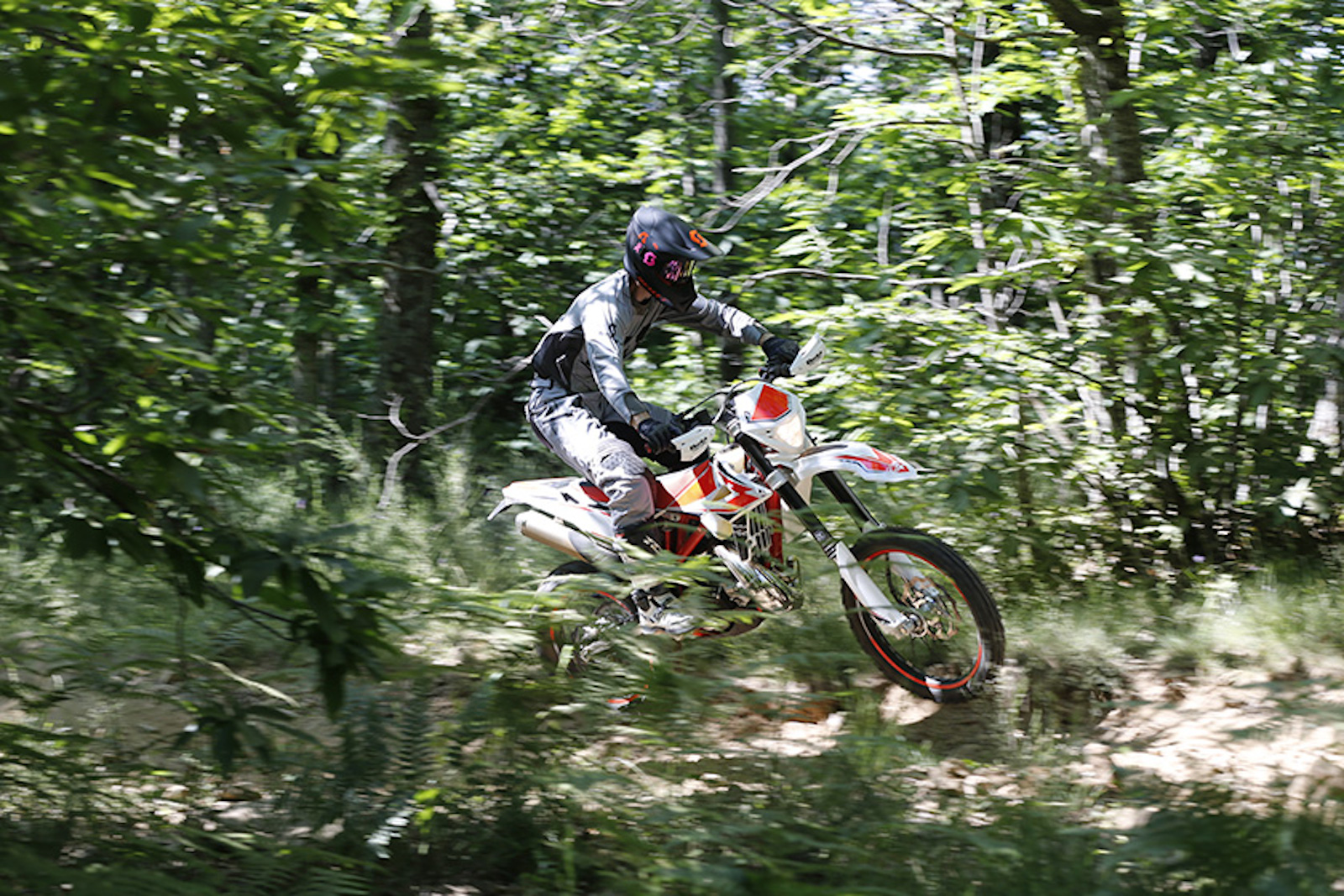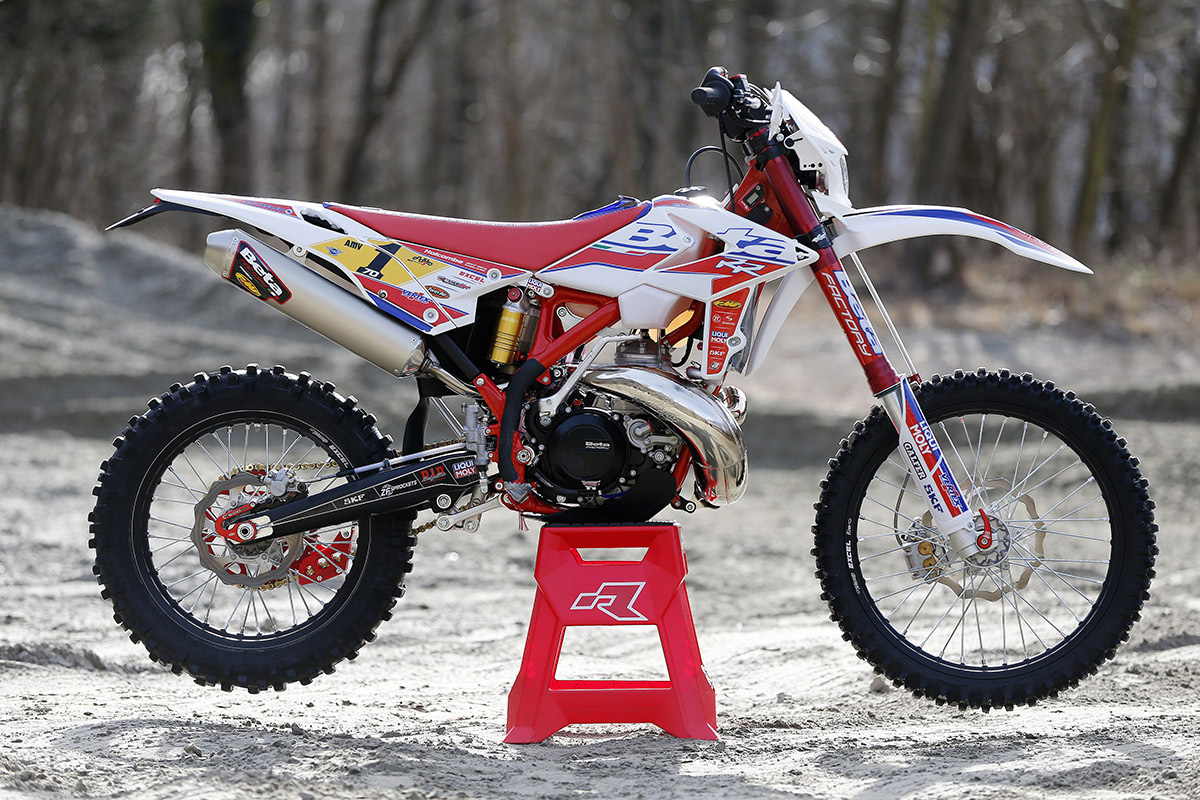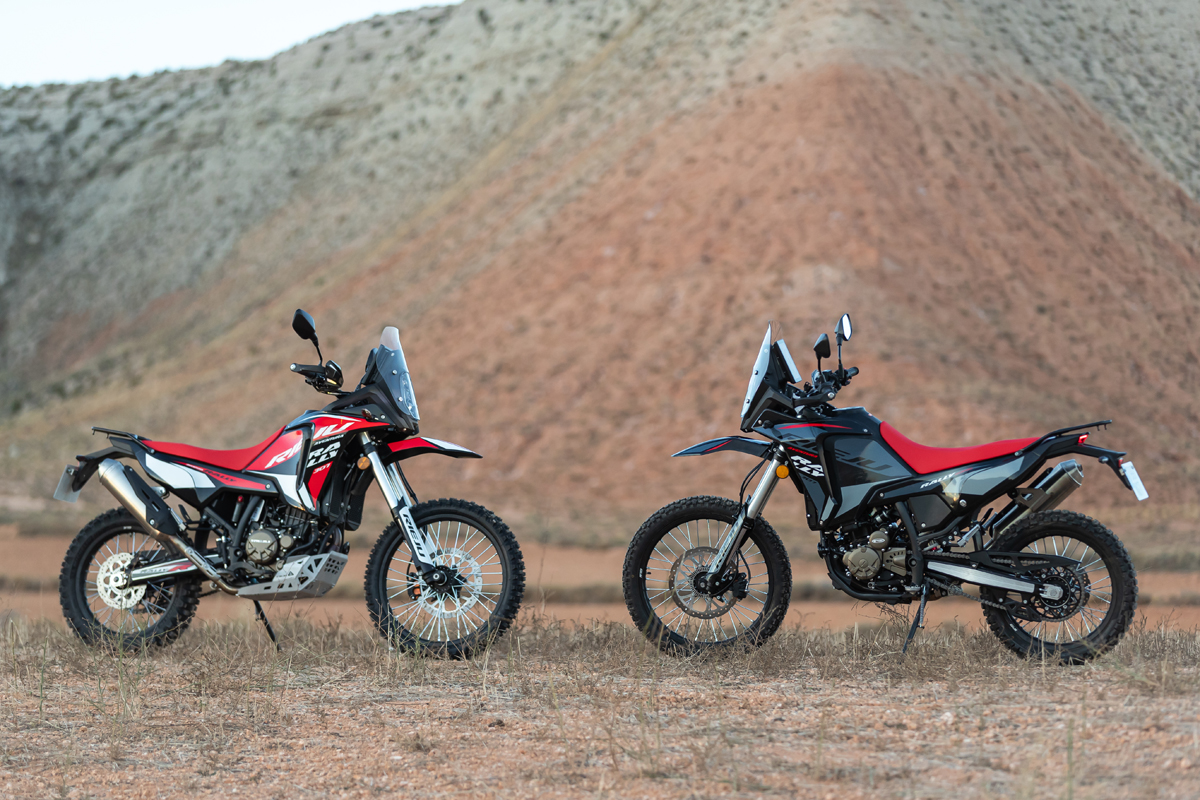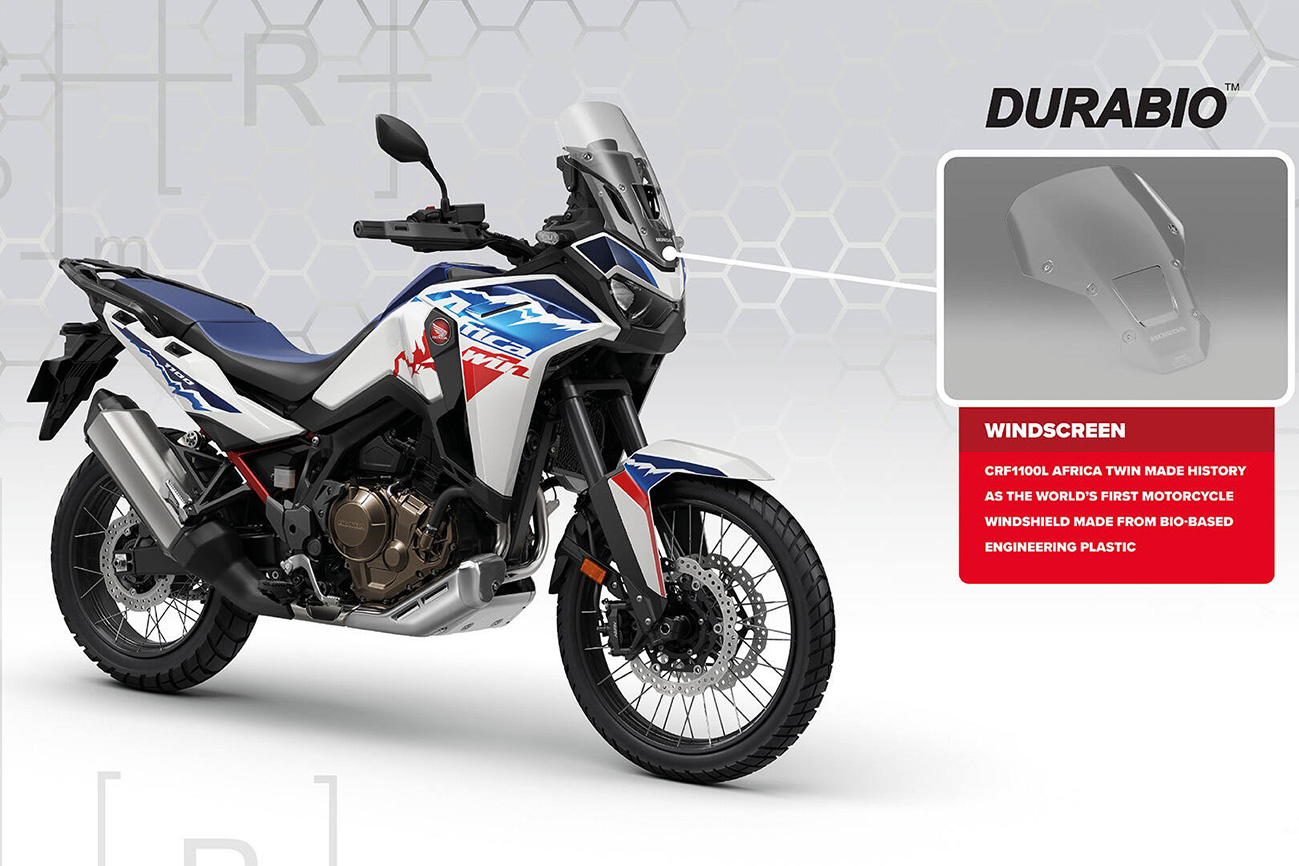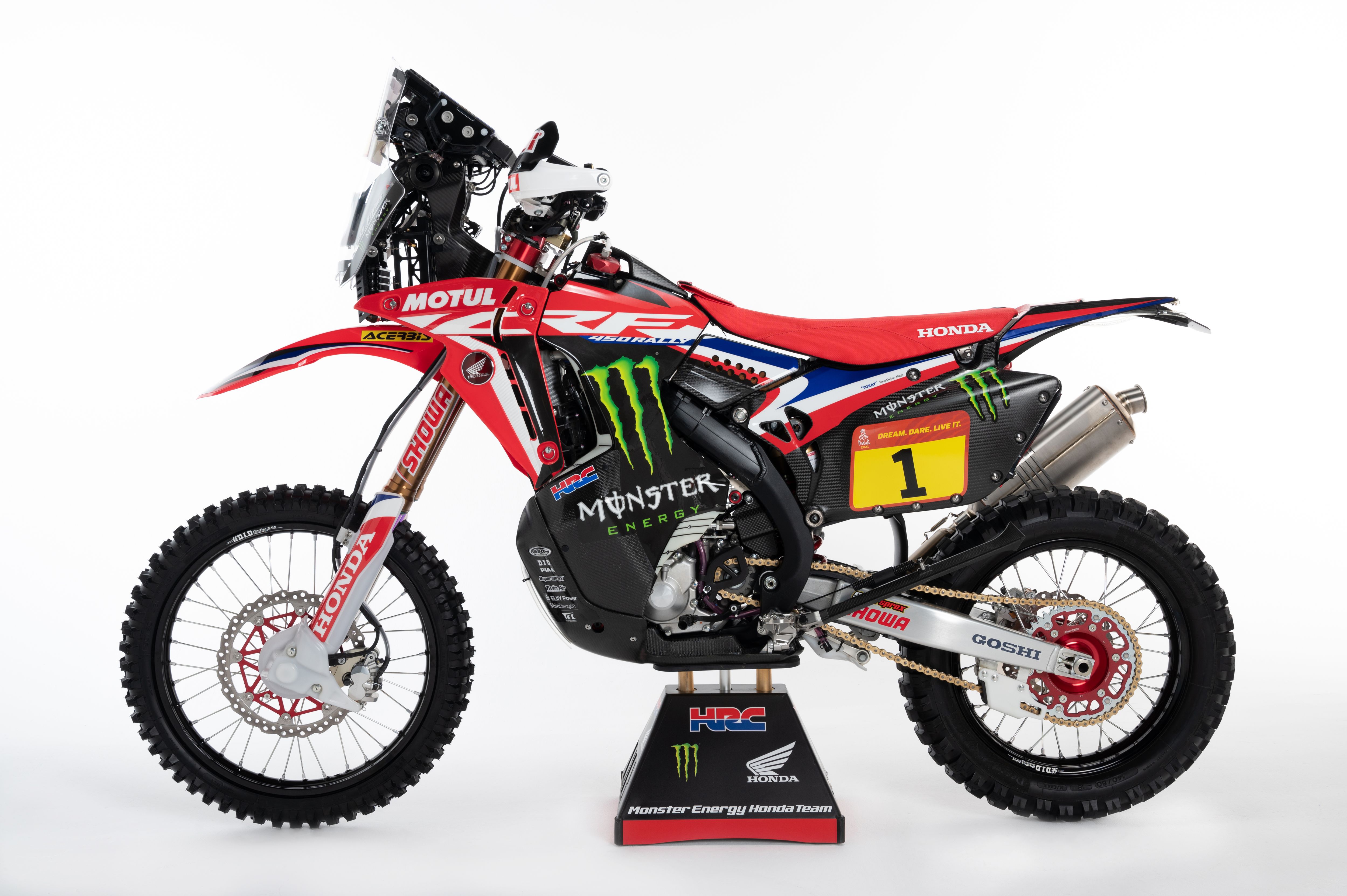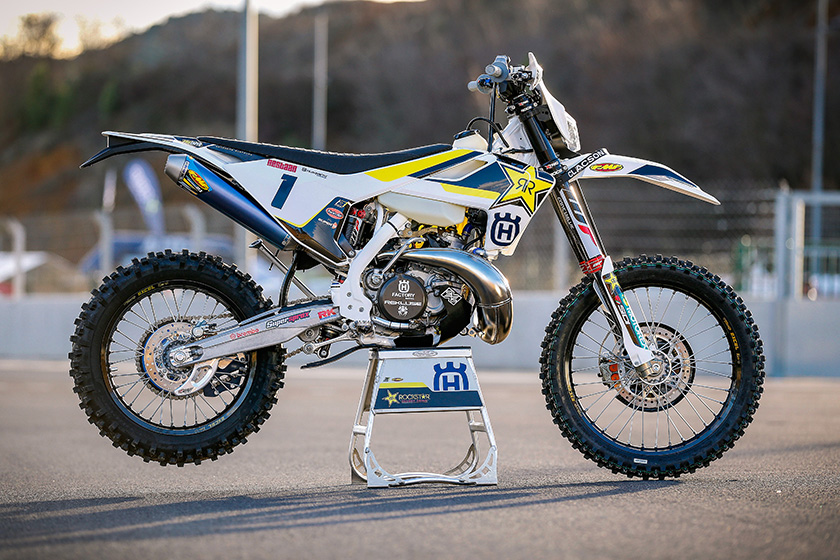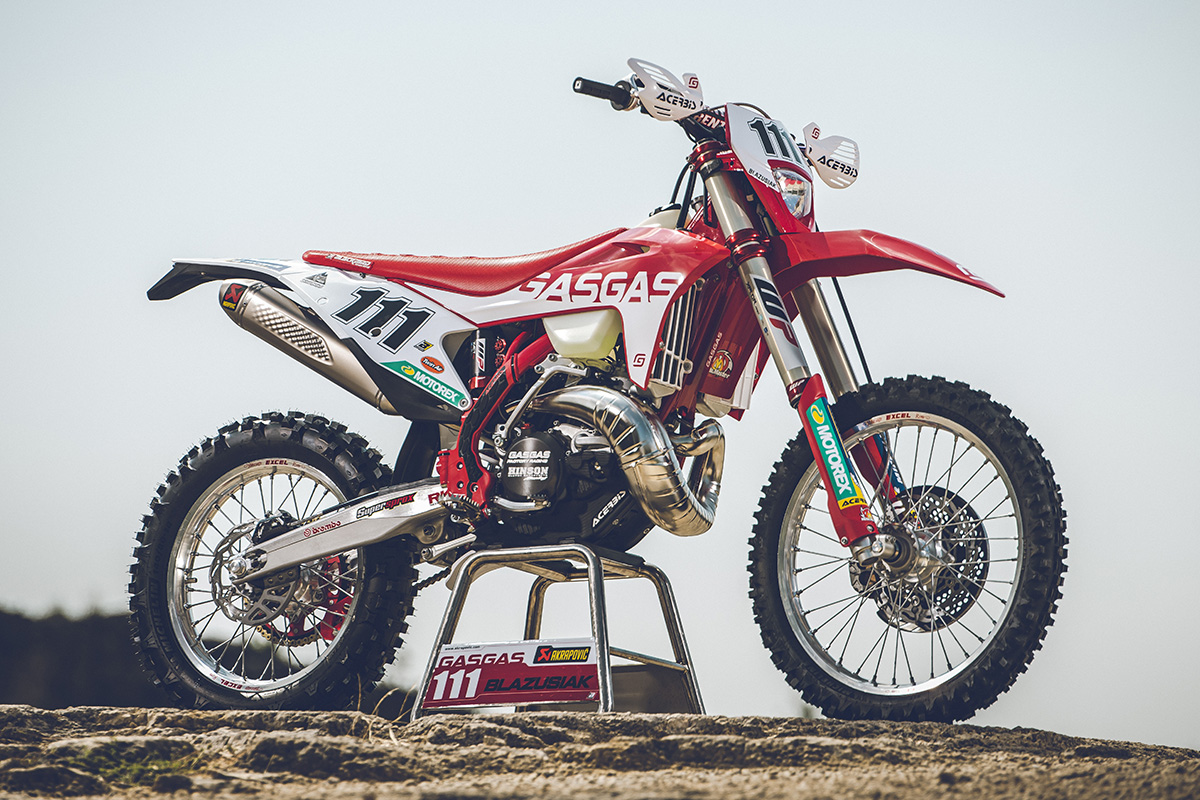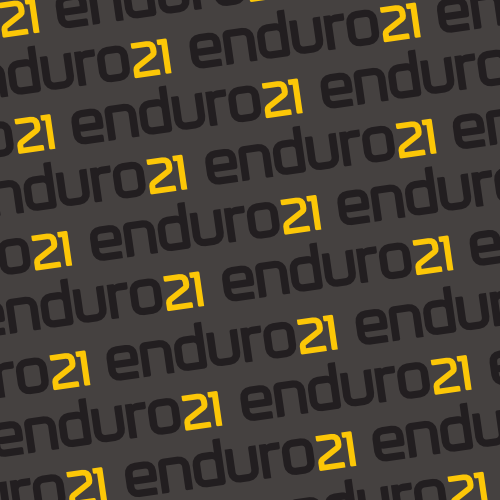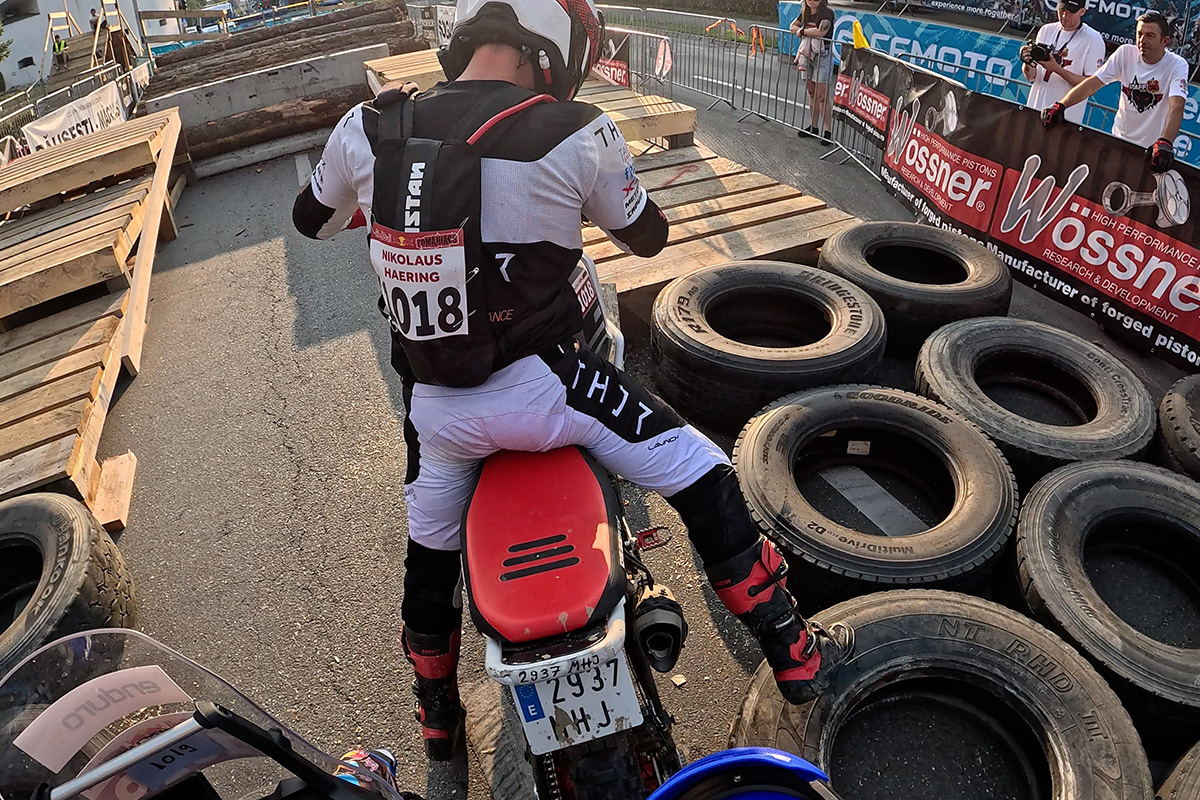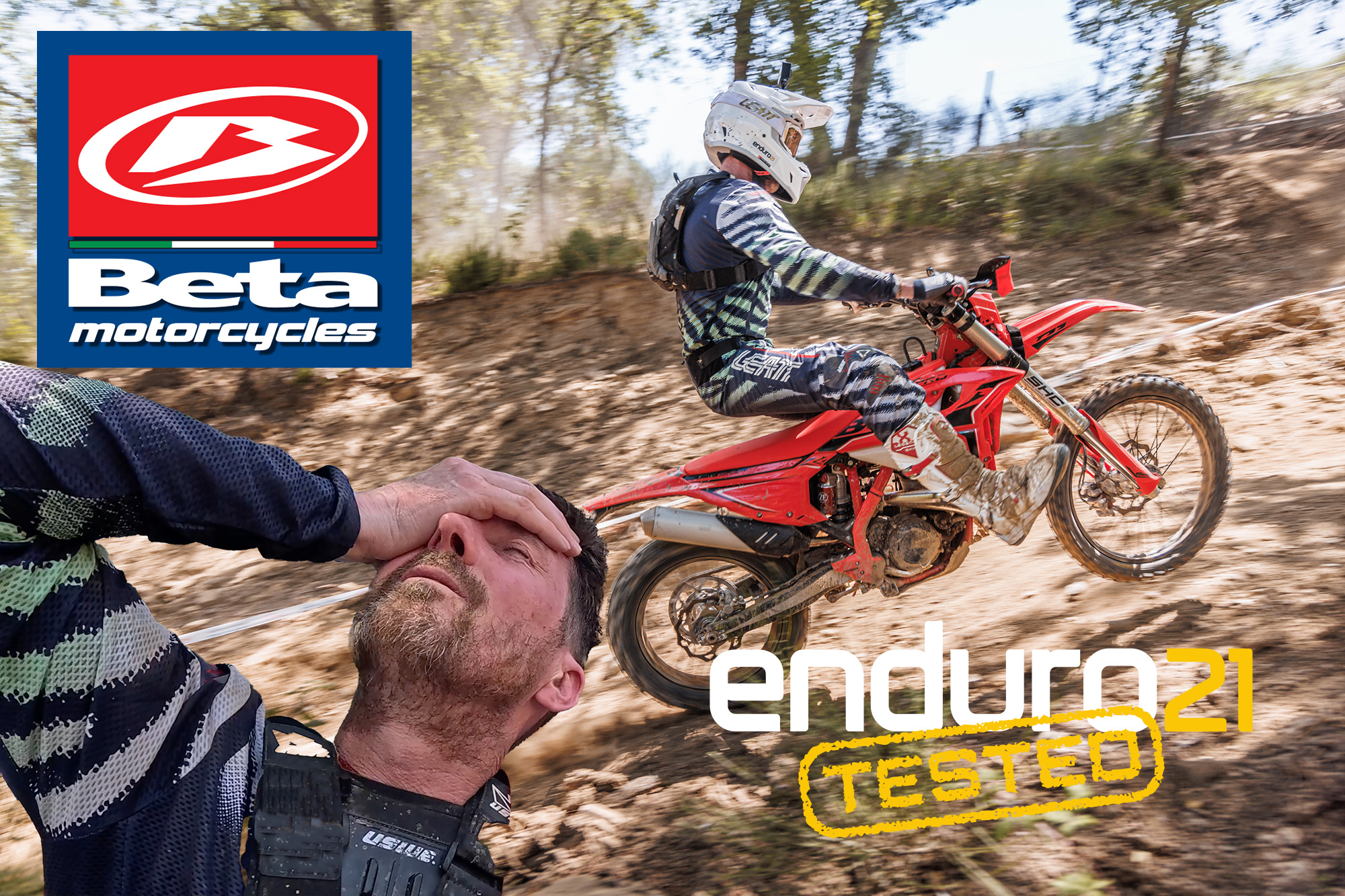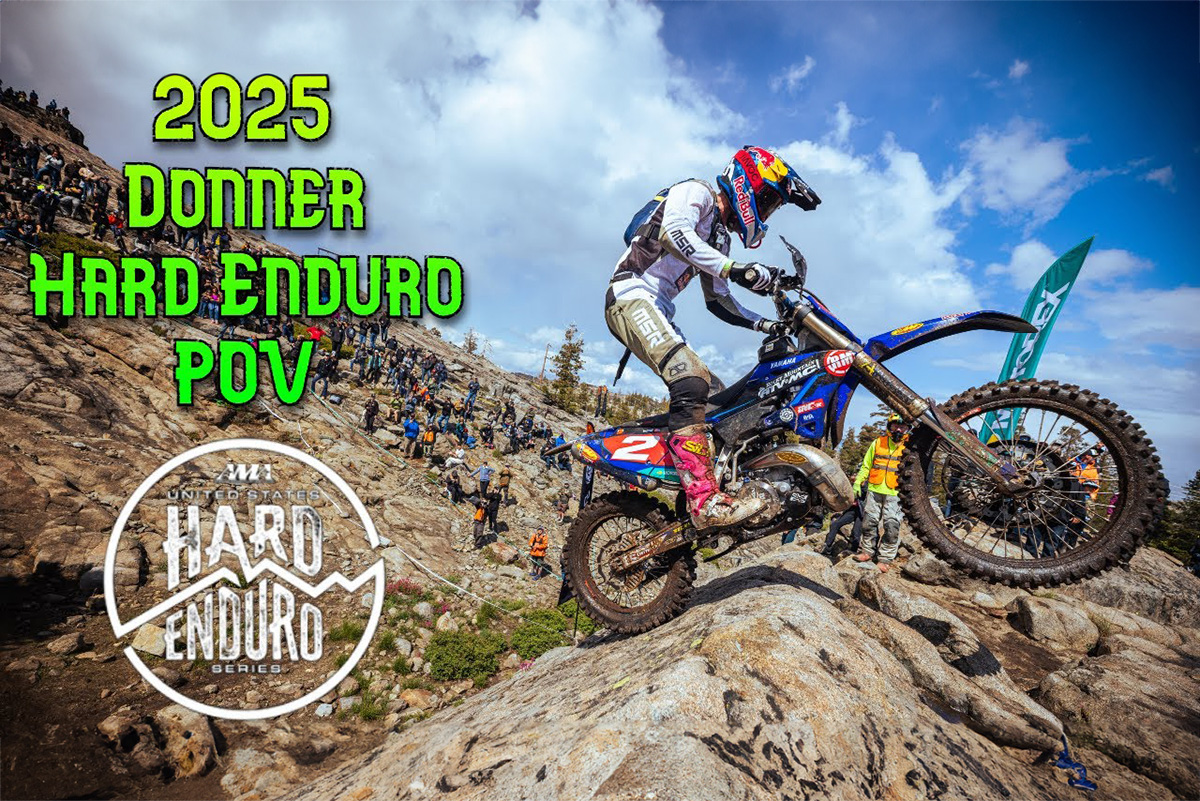Tested: 2026 Beta 350 RX – new two-stroke evolution crying out for GNCC
Enduro21 tests the new Beta 350 RX, an old-school, big-bore two-stroke ready for the real world and prime for cross-country racing – imagine GNCC on one of these!
The annual cycle of new model updates from manufacturers can get repetitive, can’t it? Fresh graphics, updates to this, modifications to that…a new something or other. We’ve heard it all before and look to what has really changed.
But every now and again something comes along to buck the trend and make us sit up. Beta surely did that with the new 350 RX.
Since Enduro21 first covered this bike, when Casey Stoner raced a flat track version last November in Italy (a double-take moment in itself to see the MotoGP legend on a Beta), our instinct was the Italian manufacturer had done something special.
You guys have since backed that up with response to our stories about the 350 2T and it is fair to say we were pretty excited to spin a few laps on it.
250, 350, 450 RX range
The occasion is the 2026 Beta model launch in Italy, an event which showed off the new X-Pro enduro model range and the RX motocross line-up (we’ll cover the eight-model X-Pro enduro range in a separate story asap).
The Beta motocross line is still only a few years old but has increasing significance to their whole off-road range. Beta tell us the enduro bikes fed into the motocross bikes from the start but over time, plus MXGP and AMA racing aiding development, the roles are reversing and motocross bikes are feeding enduro engine, chassis and component development.
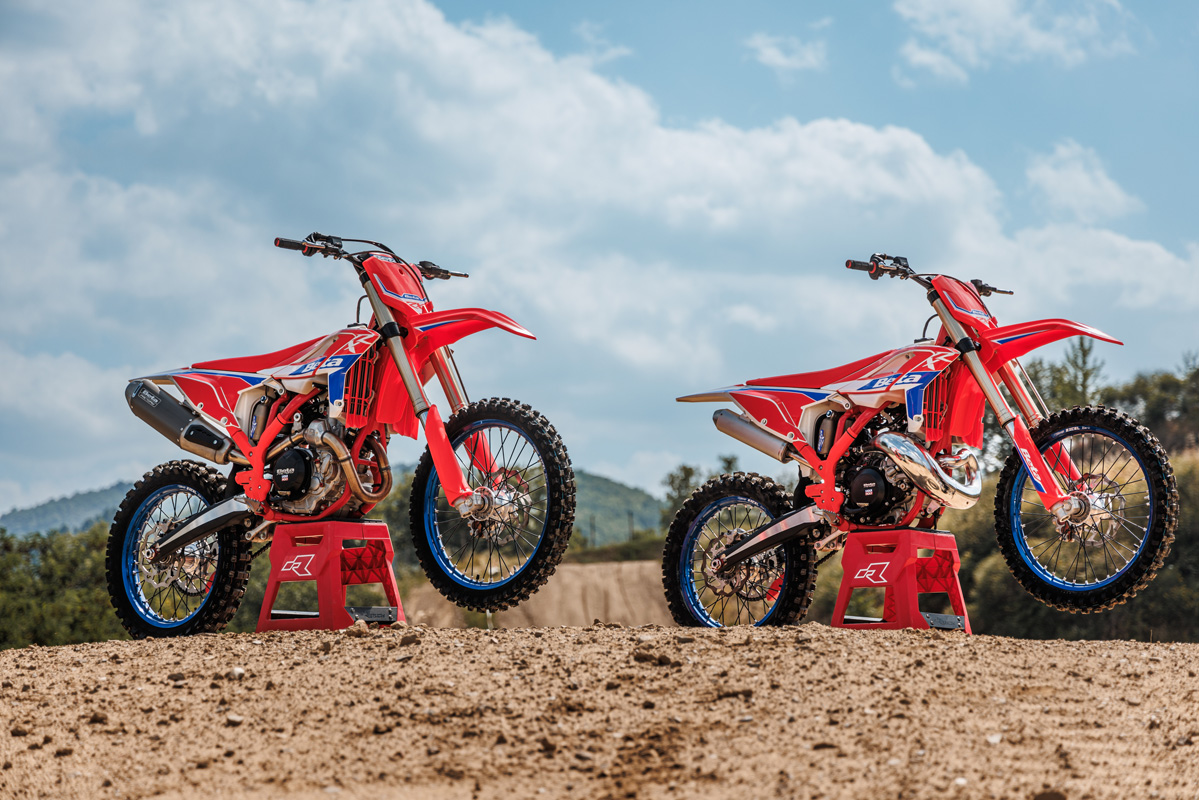
The RX range consists 250 and 350 two-strokes and a 450 four-stroke, it is that simple. Beta is well-known for the at odds model capacities in the line-up which nods to racing categories in some cases (in enduro and motocross) but also looks at the needs of riders in different parts of the world and tries to serve bikes which answer their calls.
A big, healthy dose of 490 four-stroke dual-sport stands alongside a fizzing 125 and ripper 300 race bikes for world champions. A 200cc enduro bike is so light and versatile it is hard not to put a novice or pro rider on it and not see a smile. The range of 4T enduro models can essentially fit to any kind of rider around globe for track, trail, dual-sport, desert, outback, ISDE…the list goes on and there is something for everyone.
Enter into the spotlights on stage the 350 RX, a headline grabber if ever there was one and a bike Beta hopes will be as popular to the “regular” and “real world” closed course rider as the 300 enduro model is.
Where the hell is the 350RX coming from?
Keeping riders happy and trying to burst the MX2/MX1 classes and capacity bubble is where the 350 is gunning. The 250 RX is deliberately comp-focused, as is the 450 4T which the factory team race at MXGP level.
But the “easy to ride yet high in performance” new RX 350 falls outside those categories to be something more usable with Beta setting themselves a goal of combining the advantages of the 2T with a power delivery similar to a 4T: “full-bodied and linear at any speed, powerful and yet always manageable”.
The extra cubic centimetres with the saucy twin-spark cylinder compares to the outgoing 300 favourably with a more “full-bodied” engine feel, they add. “Vast amounts of useable power” yet with a deliberate eye on the average rider who doesn’t need high maintenance costs of the four-strokes and want a bike you can clock up 100 hours on without much bother.
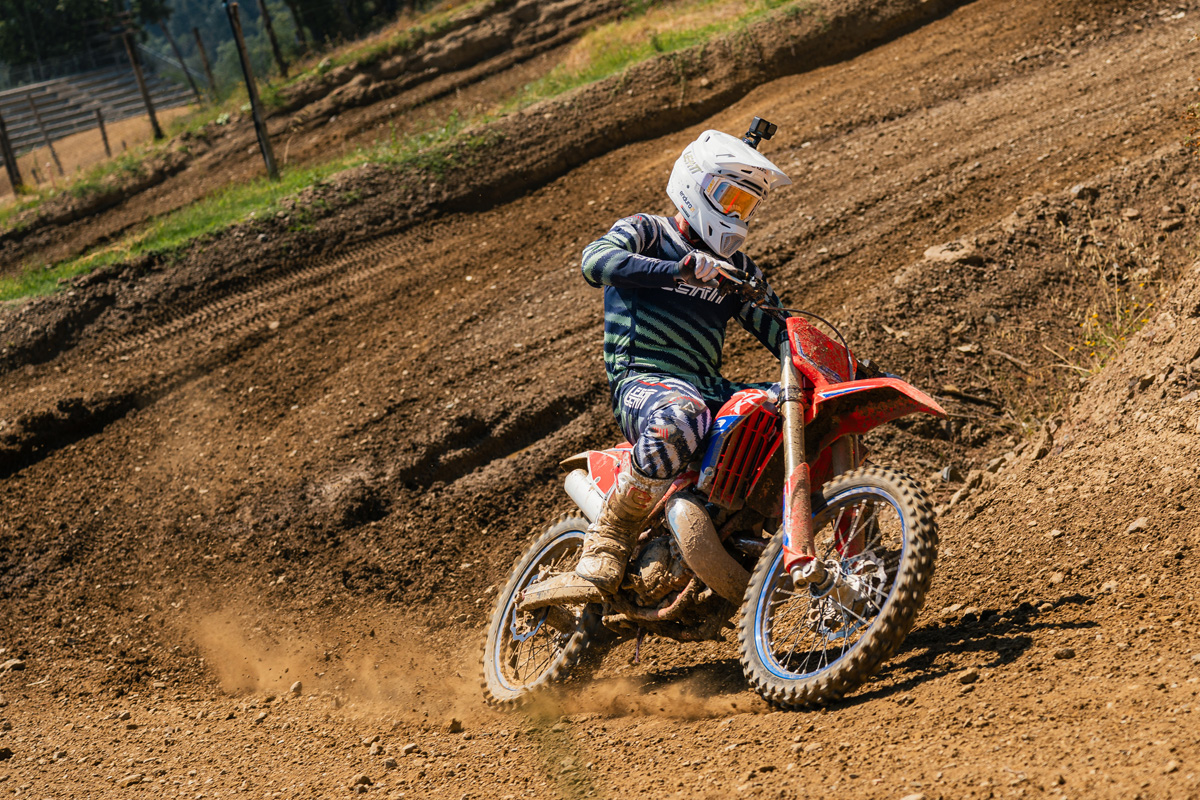
Riding impressions
And “full-bodied” it is. We tried out best to get some laps on the enduro loop laid on at this test, but Beta staff were pretty against the idea, they wanted to keep MX and enduro separate. So we had to settle for moto only here, apologies.
Making do with a few laps of the Miravalle motocross track near Montevarchi, about an hour from Florence in Italy, Enduro21 got a good chance to feel the 350 power for real and it made a strong impression.
If you want a fast verdict then torquey like a 4T but with the agility of the 2T is a good place to start. Beta’s two-strokes and four-strokes are definitely in two camps in terms of chassis feel and handling: for us the 2T models are easier to live with in enduro or motocross conditions where the four-stroke weight and crank inertia feel takes some adapting to.
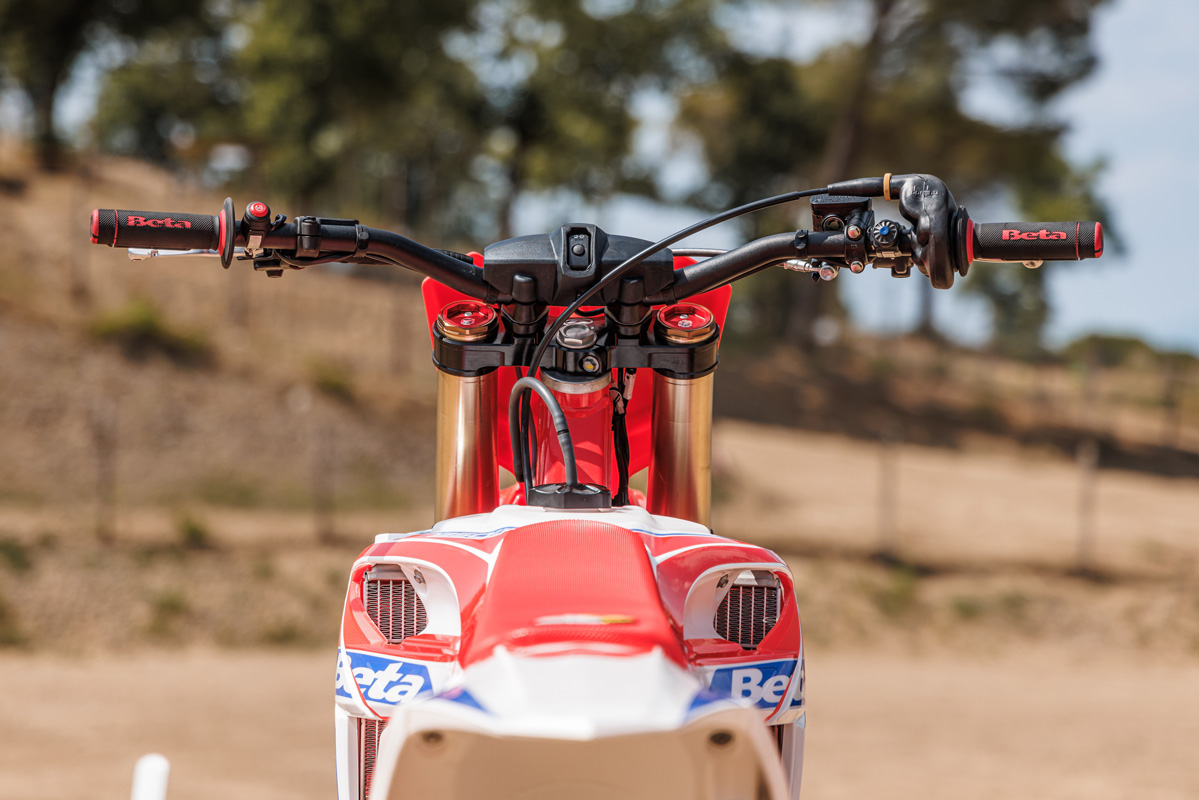
With a familiar feel to the riding position and layout of the bars, tank, radiator shrouds and seat shape, the difference between enduro and motocross bike largely boils down to the suspension settings and having punchier gear ratios to play with.
The difference between the 2T and 4T models is the way they carry weight and it is here the 350RX shone. It’s easy to feel confident on with the stable chassis, strong Nissin brakes and the natural agility a two-stroke has compared to a four banger.
Compared to a super-light two-stroke, say, the 350 RX is easily more settled on the roughest parts of the track and with MX suspension settings you’re pretty certain of being able to run faster speeds without the bike getting flustered and flappy (like the X-Pro enduro would if you took it on a moto track).
So tick number one is in having an agile but planted bike, just what most people want Beta would say and we can’t argue.
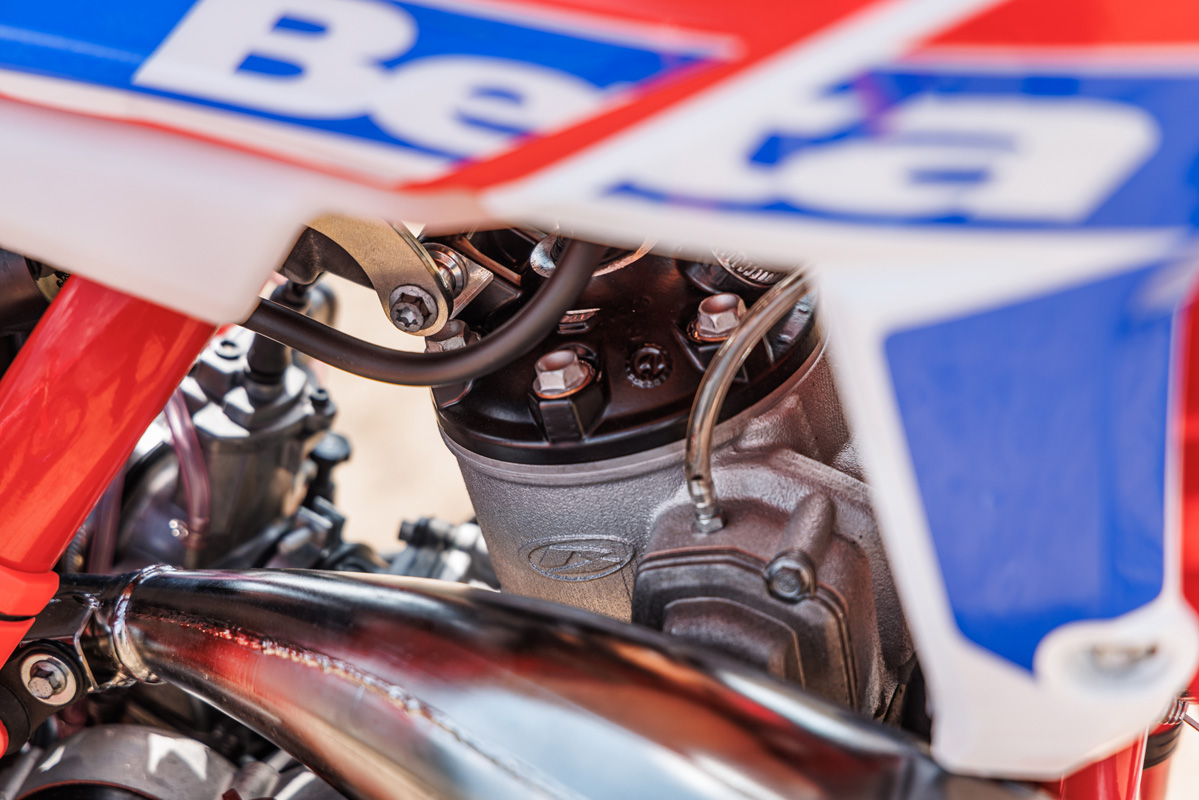
Twin spark motor
Tick number two is the twin-spark motor which is the trump card here in a settled chassis. The power is torquey and linear, very strong in the mid-range to the point where on our first test laps it was pulling out our arms.
If you try to push it the punch of power is there, no question, and it makes making jumps an easy task. But it can also run a gear higher, let you carry speed more lazily and this is the thing Beta were keen for us to enjoy and experience.
There’s feel for the grip and the front end finds tighter lines than the 450 can, hitting marks on the track and making life as easy as you want it to be (when you’re admittedly not especially a moto kinda guy).
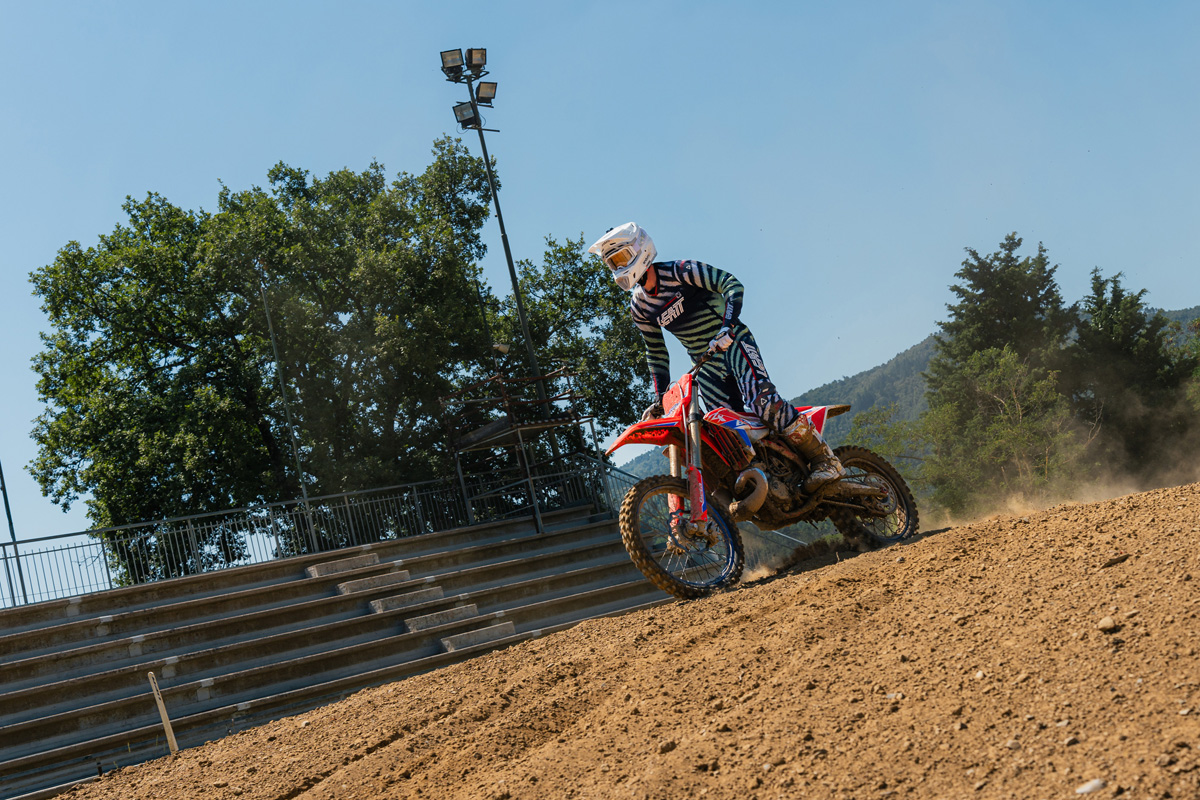
Enduro21 verdict
Beta: you can’t keep enduro and moto separate with this bike. There are a lot of us out here who don’t’ want the moto track constraints and hassle. We like riding for ages not 15 minutes and, besides, roots, rocks and trees are more fun.
In actual fact there’s not too much new about this bike, at a basic level it is the 300 beefed-up “as big as we could go” with this engine platform. And that is how it feels, in essence the 300 with a bit more fire in the belly.
Standing at a claimed 100kg it is a manageable motorcycle on the dirt and with nothing complicated about the ride – just a start and stop button on the bars is all the electronics you’re getting here – a familiar and easy to live with chassis, and a very good suspension and brakes package.
The 300 RX is very simply a good, old-fashioned dirt bike in a modern package. Old school rules apply from the big-bore motor to the simplicity of being able to reach the spark plug (s) and for many people that’s exactly what they want.
Take me to GNCC!
Yes, it has a 19-inch rear wheel, no kickstand and a five-speed gearbox but so do a lot of XC bikes. This one should be a lot easier to convert with interchangeable parts – like the rear wheel for example – from the enduro range.
The 350 RX has a seven litre (1.8 US Gal) fuel tank which is see-through for level checks while you’re riding, unlike many moto machines. Yes, it is pre-mix which Beta say is perfect for recreational or race use on closed courses. In a world where two-strokes are under the cosh for emissions (at least in enduro), it is refreshing to see the carburettor and a pre-mix fuel tank on a new bike.
The 350RX is going to be awesome in cross-country racing. Can you imagine a GNCC-spec 350RX with a bigger tank? If someone isn’t already building one up in the US we’ll eat our hats.
Photo Credit: Beta Motor




